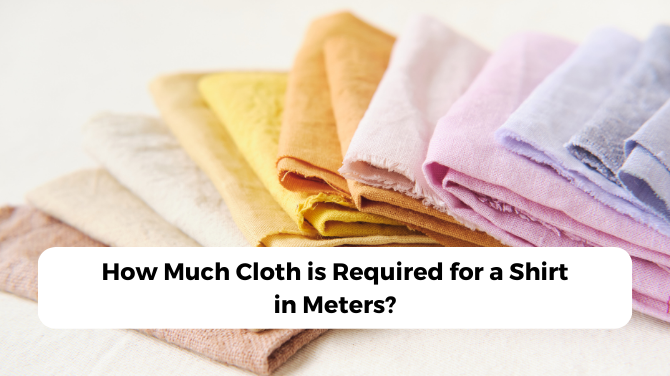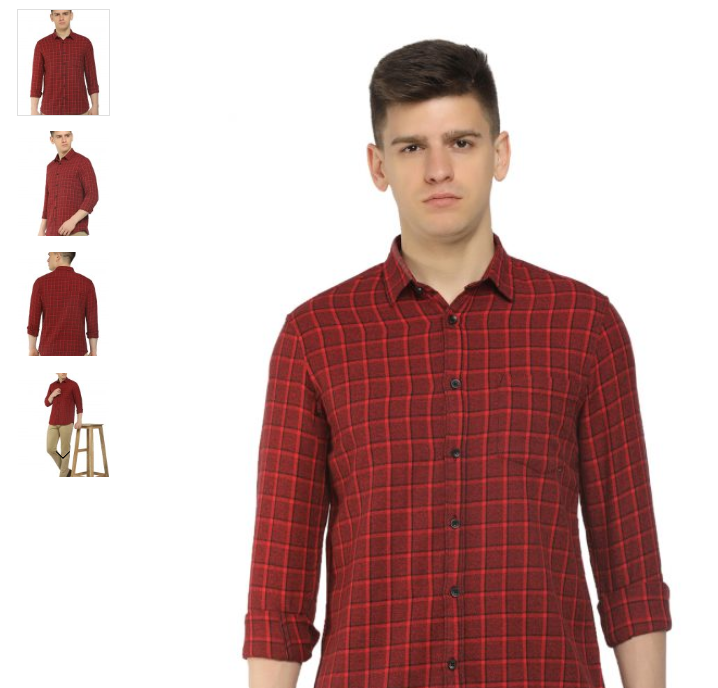
In the world of fashion, shirts are a staple garment that can be found in almost every wardrobe. Whether you’re a fashion enthusiast or just someone looking to get a shirt tailored, one common question that arises is, “How much cloth is required for a shirt in meters?” In this article, we will explore the factors that determine the amount of fabric needed to make a shirt and provide you with a comprehensive answer to this question.
How Much Cloth is Required for a Shirt in Meters
Shirts come in various styles, sizes, and designs, which means that the amount of fabric required can vary. It’s essential to understand the different factors that influence the fabric consumption when making a shirt. By considering these factors, you can ensure that you have the right amount of fabric to create your desired shirt.
Understanding Shirt Measurements
Before delving into the fabric requirements, let’s first familiarize ourselves with some important shirt measurements. These measurements are crucial for determining the fabric needed for each specific component of the shirt, such as the collar, cuffs, sleeves, and body.
– Neck Size: The circumference of the neck, usually measured in inches or centimeters.
– Chest Size: The circumference of the chest at its widest point, just below the armpits.
– Sleeve Length: The distance from the shoulder seam to the desired length of the sleeve.
– Shirt Length: The desired length of the shirt, typically measured from the base of the collar to the hem.
Determining Fabric Requirements
To calculate the amount of fabric required for a shirt, we need to consider several factors:
a) Fabric Width
The width of the fabric plays a significant role in determining the amount needed. Fabrics usually come in standard widths, such as 45 inches (114 cm) or 60 inches (152 cm). A wider fabric will require less length to cover the same area compared to a narrower one.
b) Shirt Size
The size of the shirt also affects the fabric requirement. Larger shirt sizes naturally require more fabric, while smaller sizes require less. The neck size, chest size, sleeve length, and shirt length all contribute to the overall fabric needed for a particular size.
c) Design and Style
The design and style of the shirt can influence the fabric consumption as well. Shirts with additional details like pleats, ruffles, or intricate patterns may require extra fabric. On the other hand, simpler and more streamlined designs may use less fabric.
Shirt Styles and Their Fabric Consumption
Different shirt styles have varying fabric requirements. Let’s explore a few common styles and their approximate fabric consumption:
a) Classic Dress Shirt
A classic dress shirt typically requires around 1.5 to 2 meters of fabric, depending on the size. This includes fabric for the body, sleeves, collar, cuffs, and placket.
b) Casual Button-Down Shirt
A casual button-down shirt, often seen in more relaxed settings, generally needs approximately 1 to 1.5 meters of fabric. The amount may vary based on the size and any additional design elements.
c) Short-Sleeved Shirt
Short-sleeved shirts, which are perfect for warm weather, require less fabric than long-sleeved ones. On average, you can expect to use around 1 to 1.25 meters of fabric for a short-sleeved shirt.
It’s important to note that these figures are approximate and can vary depending on individual preferences, shirt size, and the design’s intricacy.
Tips for Buying Fabric
When purchasing fabric for your shirt, it’s advisable to buy a little extra to account for any errors during cutting and stitching. Here are a few tips to help you make the right fabric purchase:
– Check the fabric width: Ensure that you know the width of the fabric you’re purchasing, as this will determine the length you’ll need.
– Consider pattern matching: If your fabric has a pattern or print, you may require additional fabric to ensure proper pattern matching across the shirt’s different components.
– Seek professional advice: If you’re uncertain about the fabric requirements or need guidance on selecting the right fabric, consult with a professional tailor or fabric store staff. They can provide valuable insights based on their expertise.
Conclusion
Determining the exact amount of cloth required for a shirt in meters depends on various factors such as fabric width, shirt size, and design. While the figures provided in this article offer a general guideline, it’s essential to consider individual preferences and consult with professionals for accurate measurements. By understanding these factors and following the tips mentioned, you can ensure that you have sufficient fabric to create a well-fitted and stylish shirt.
FAQs
1: Can I use less fabric if I opt for a slim-fit shirt?
A: Slim-fit shirts generally require slightly less fabric due to their more streamlined design. However, the difference may not be significant, and it’s advisable to follow the recommendations of a professional tailor.
2: What if my fabric width is different from the standard widths mentioned?
A: If your fabric width is different, you can adjust the required length accordingly. Divide the total area needed by the width to determine the length required.
3: How can I calculate the fabric requirement if I want to make a shirt with specific design elements?
A: For shirts with specific design elements, it’s best to consult with a professional tailor who can provide accurate measurements based on the chosen design.
4: Is it better to buy more fabric than required to be safe?
A: It’s advisable to purchase a little extra fabric to account for any errors during the cutting and stitching process. This ensures that you have enough fabric to complete the shirt without running short.
5: Where can I find a wide variety of fabrics for shirts?
A: You can explore local fabric stores, online fabric retailers, or specialized tailoring shops to find a wide range of fabrics suitable for making shirts.
In conclusion, calculating the exact amount of fabric required for a shirt in meters depends on various factors such as fabric width, shirt size, and design. By understanding these factors, seeking professional advice when needed, and following some key tips, you can ensure that you have the appropriate amount of fabric to create your desired shirt. So, go ahead and embark on your shirt-making journey with confidence!


